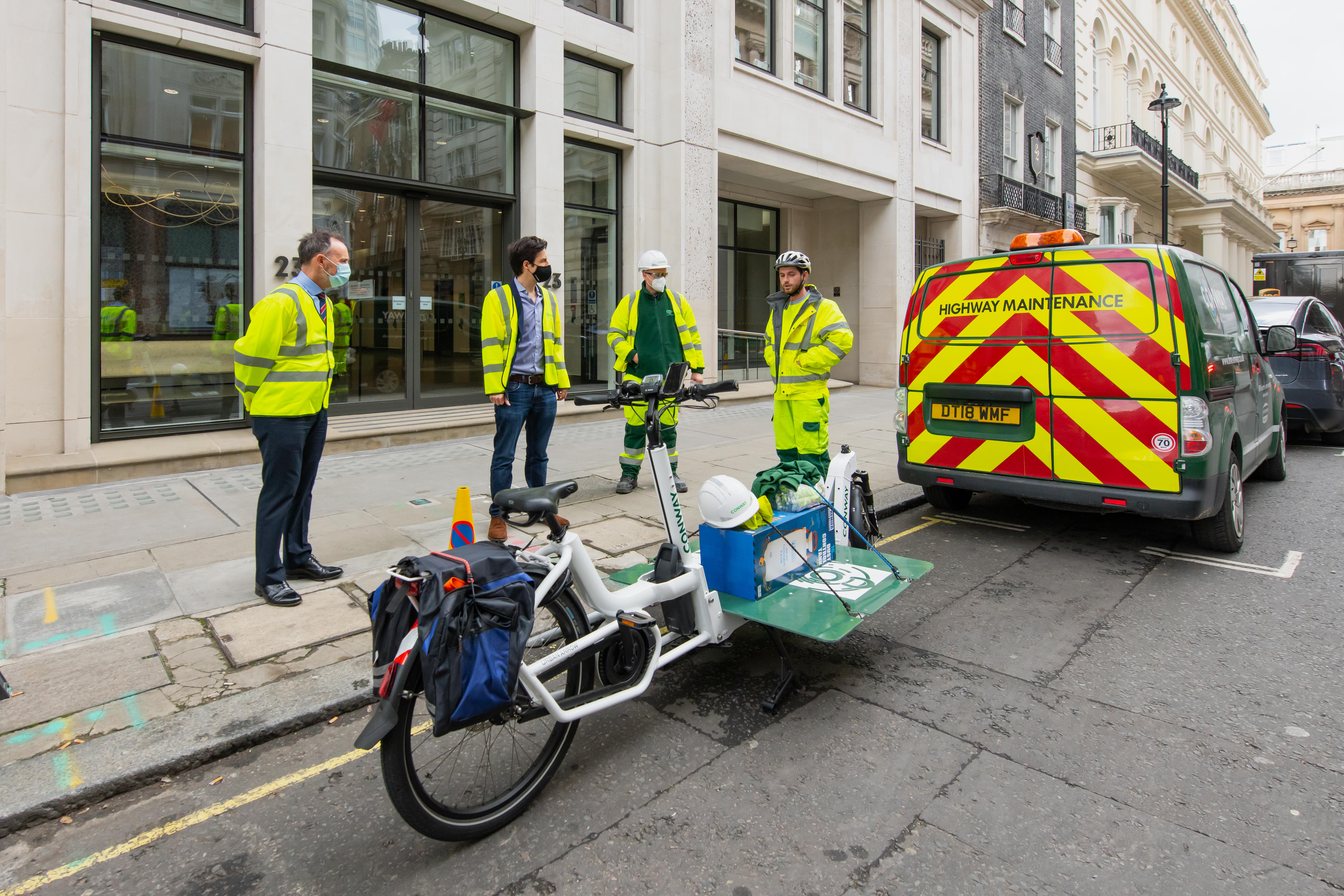Challenges and Solutions
One of the biggest challenges of the project, was utilising equipment and materials that reflected the low carbon nature of the trial, therefore, alternatives needed to be found.
For the kerb line reinstatement, the teams used GreenPatch, a product manufactured with recycled asphalt and no petroleum-based ‘cut back’ solvents. This was used instead of Hot Rolled Asphalt (HRA) in order to provide a more environmentally friendly solution. Low carbon C10 concrete was then used for the footway and C40 concrete was used for the kerbing.
By reducing the slab thickness used from 63mm to 50mm, this also allowed for more efficient vehicle deliveries, ultimately reducing carbon, including a saving in embodied carbon and a reduction in waste removal and reduction of packaging.
The site welfare was powered by electric from renewable sources and on-site renewable energy to save on conventional diesel welfare cabins over the duration of the project. Plus, the electric powered plant and small vehicles gave savings in red diesel consumption and petrol, whilst also offering a quieter electric alternative to reduce noise pollution in Westminster.
A further saving was achieved by using HVO in FM Conway diesel HGV’s to make carbon savings where the technology is not available to change to an electric or zero carbon alternative.
A number of electric tools and plant were also used, including an electric excavator, an electric forklift, wacker and saw, as well as the use of an electric car service. An electric vehicle charge point was also installed in order to charge the electric plant and was left in place in order to encourage local residents to switch to electric vehicles.

